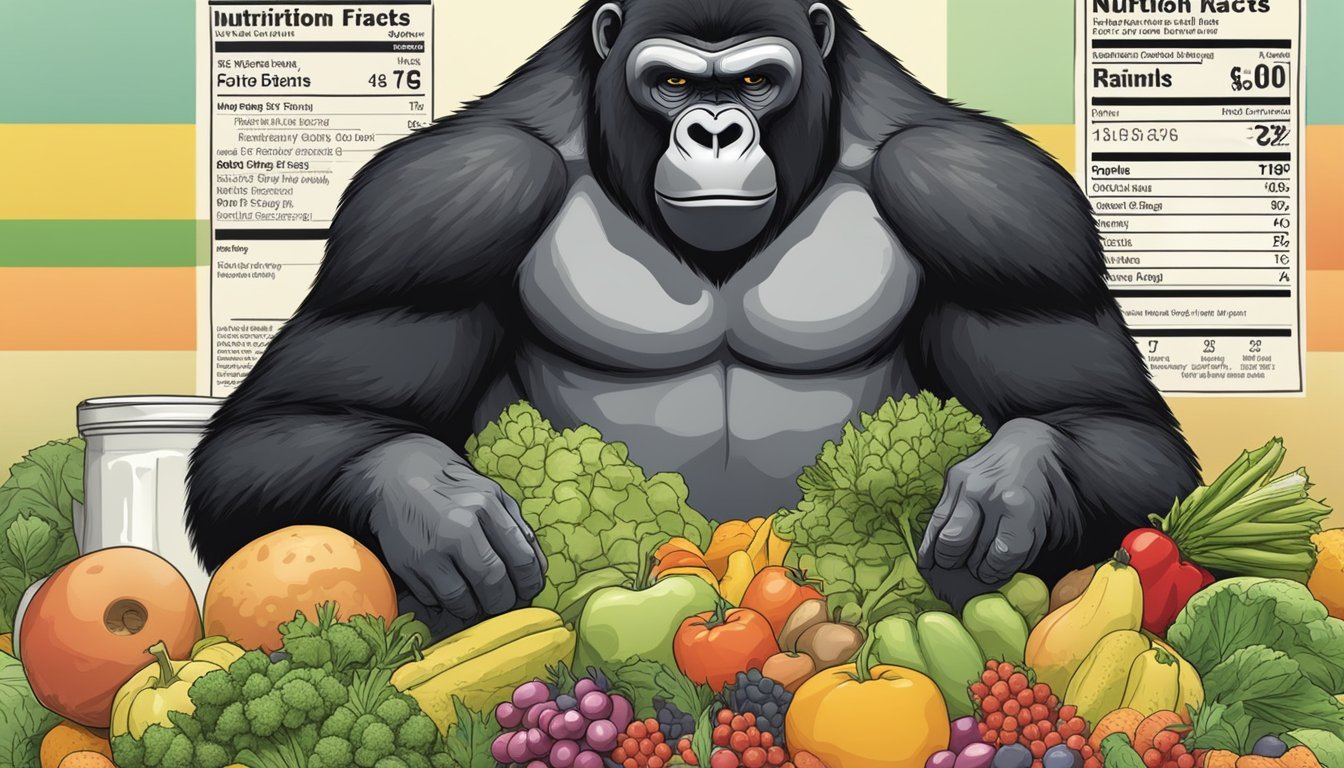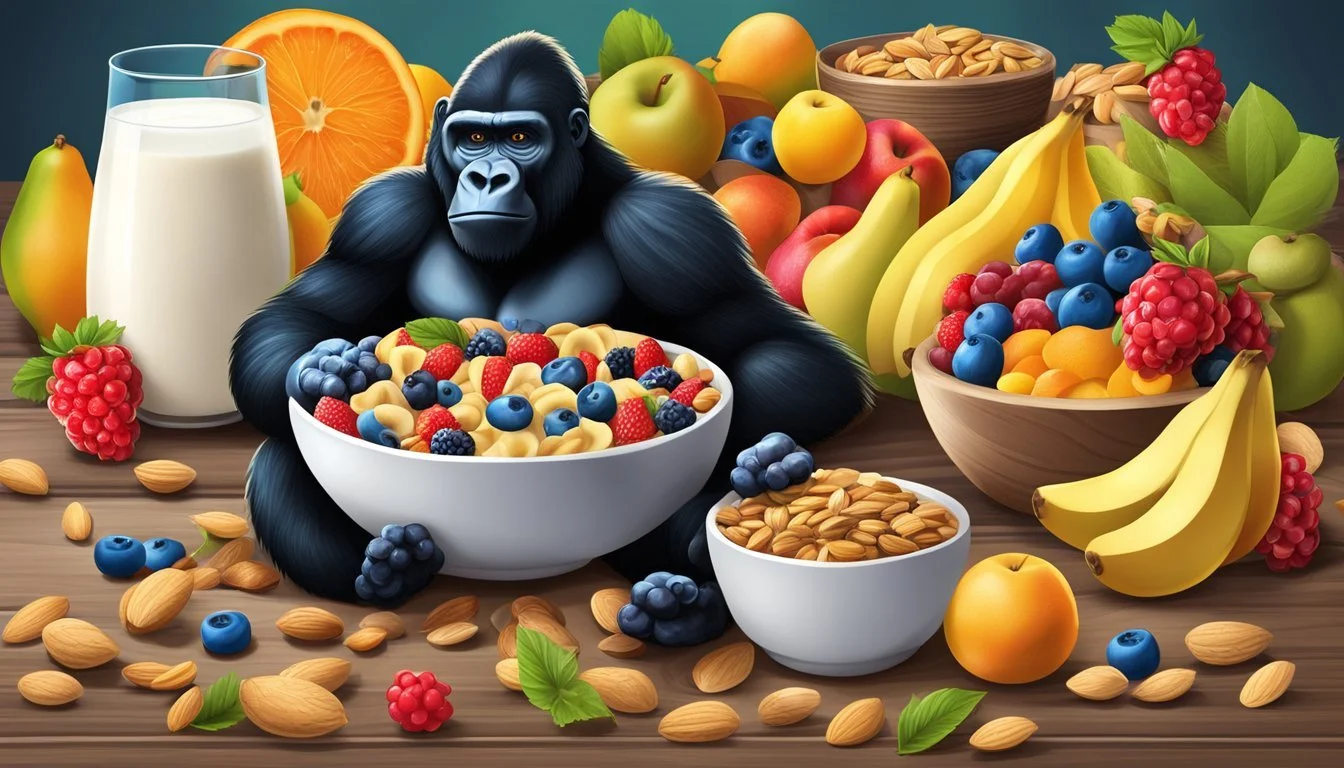Gorilla Munch Nutrition Facts & More
A Comprehensive Look at This Cereal's Health Benefits
Gorilla Munch cereal offers a nutritious and tasty breakfast option for those seeking a gluten-free, organic choice. Made with whole grain corn and sweetened with organic sugar, this cereal provides a light, crunchy texture that holds up well in milk. Each 3/4 cup (30g) serving of Gorilla Munch contains 120 calories, with 90% of those calories coming from carbohydrates.
Nature's Path, the company behind Gorilla Munch, created this cereal as part of their EnviroKidz line, aiming to provide a nutritious option for children without compromising on taste. The cereal contains only four non-GMO ingredients and is free from artificial flavors, colors, and preservatives. It also boasts 11 essential vitamins and minerals, including iron, vitamin D, and vitamin B12, contributing to its nutritional profile.
For those watching their dietary intake, it's worth noting that Gorilla Munch is low in fat, with only 3% of its calories coming from fat sources. The cereal also provides a modest amount of protein, accounting for 7% of its caloric content. These nutritional characteristics make Gorilla Munch a potential option for individuals looking to balance their macronutrient intake while enjoying a sweet, crunchy cereal.
Product Overview
Gorilla Munch is a popular cereal option known for its simple ingredients and nutritional benefits. This organic, gluten-free cereal is produced by Nature's Path under their EnviroKidz brand.
Brand Profile
Nature's Path, founded in 1985, is a family-owned organic food company. Their EnviroKidz line focuses on creating nutritious, kid-friendly products. Gorilla Munch exemplifies the brand's commitment to organic, non-GMO ingredients.
The company donates 1% of EnviroKidz sales to wildlife conservation and education efforts. This aligns with their mission to promote environmental sustainability and social responsibility.
Gorilla Munch Characteristics
Gorilla Munch is made primarily from whole grain corn. The cereal consists of light, airy corn puffs with a subtle sweetness. It contains only four ingredients: organic whole grain corn meal, organic corn meal, organic cane sugar, and sea salt.
The cereal is vegan-friendly and free from artificial colors, flavors, and preservatives. It maintains its crunch well in milk, making it a satisfying breakfast or snack option.
Gorilla Munch comes in various package sizes, including a 10 oz box and a larger 650g eco-friendly bag. The product's simplicity and nutritional profile make it appealing to health-conscious consumers and parents looking for wholesome options for their children.
Nutritional Information
Gorilla Munch cereal offers a range of nutrients in each serving. This gluten-free, organic corn puff cereal provides essential macronutrients, vitamins, and minerals to support a balanced diet.
Macronutrient Breakdown
A 3/4 cup (30g) serving of Gorilla Munch contains 120 calories. The calorie distribution comes from carbohydrates, protein, and a small amount of fat.
Carbohydrates: 26g per serving Protein: 2g per serving Fat: 1g per serving
The cereal is low in fat, with only 9 calories from fat sources. It contains no saturated or trans fats. The primary macronutrient is carbohydrates, derived from whole grain corn.
Vitamin Content
Gorilla Munch is fortified with essential vitamins to support overall health. A single serving provides:
Vitamin D: 10% of Daily Value (DV)
Vitamin B12: 25% of DV
Thiamin (B1): 25% of DV
Riboflavin (B2): 25% of DV
Niacin (B3): 25% of DV
These vitamins play crucial roles in energy metabolism, nervous system function, and maintaining healthy blood cells.
Mineral Content
The cereal also contains important minerals:
Iron: 10% of DV
Zinc: 10% of DV
Phosphorus: 4% of DV
Iron supports oxygen transport in the body, while zinc aids in immune function and wound healing. Phosphorus contributes to bone health and energy production.
Gorilla Munch is low in sodium, with only 65mg per serving. This makes it a suitable option for those monitoring their sodium intake.
Health Benefits
Gorilla Munch offers several nutritional advantages, including dietary fiber and essential vitamins and minerals. The cereal's sugar content also warrants consideration for those monitoring their intake.
Dietary Fiber Benefits
Gorilla Munch contains dietary fiber from its whole grain corn base. Fiber aids digestion and promotes feelings of fullness, which can support weight management. It also helps regulate blood sugar levels and may reduce the risk of heart disease.
The exact fiber content in Gorilla Munch varies, but whole grain cereals typically provide 2-3 grams per serving. This contributes to the recommended daily intake of 25-30 grams for adults.
Sugar Analysis
Gorilla Munch contains added sugars, which provide quick energy but should be consumed in moderation. The cereal's sugar content is primarily from sucrose, with smaller amounts of glucose and fructose.
A single serving contains about 8-10 grams of sugar. This accounts for a portion of the American Heart Association's recommended daily limit of 25-36 grams for adults.
While sugar adds flavor, it's important to balance Gorilla Munch with other nutrient-dense foods for a well-rounded diet. Pairing the cereal with fresh fruit or nuts can enhance its nutritional profile.
Diet and Lifestyle Considerations
Gorilla Munch cereal offers versatility for various dietary needs and can be incorporated into different meal plans. Its simple ingredients make it suitable for certain restricted diets while providing options for creative meal integration.
Suitability for Dietary Restrictions
Gorilla Munch is gluten-free, making it a suitable option for those with celiac disease or gluten sensitivity. The cereal is also certified organic, appealing to consumers who prioritize organic food choices.
Vegans can enjoy Gorilla Munch as it contains no animal-derived ingredients. It's free from artificial preservatives, colors, and flavors, aligning with clean-eating preferences.
While Gorilla Munch provides some nutrients, it's relatively low in dietary fiber. Individuals seeking higher fiber intake may need to supplement their diet with additional sources.
Integrating into Meals
Gorilla Munch can be consumed beyond traditional breakfast. It serves as a quick snack or a crunchy topping for yogurt parfaits.
For a more balanced meal, pair Gorilla Munch with protein-rich foods like Greek yogurt or plant-based milk. Adding fresh fruits can increase the nutritional value and fiber content.
The cereal can be used as an ingredient in homemade trail mix or granola bars for on-the-go snacking. It also works as a coating for baked chicken or fish, providing a crispy texture.
Gorilla Munch can be crushed and mixed with nuts and seeds to create a custom granola blend, offering more control over nutritional content and flavor profiles.
Serving Recommendations
Gorilla Munch cereal offers versatile serving options to fit different dietary needs and preferences. Proper portion control helps manage calorie intake, while creative serving ideas can add variety to meals.
Portion Control
A standard serving of Gorilla Munch is 3/4 cup (30g), containing 120 calories. This portion size provides a balanced amount of energy without excessive calorie intake. For weight management, measuring servings is crucial.
Adults may find a single serving satisfying, while children might need less. Pair the cereal with low-fat milk or a non-dairy alternative to boost nutritional value. Adding fruit can increase fiber content and natural sweetness.
Creative Serving Ideas
Gorilla Munch can be enjoyed beyond the breakfast bowl. Use it as a crunchy topping for yogurt parfaits or smoothie bowls. Mix it into homemade trail mix with nuts and dried fruits for a portable snack.
Create a healthier dessert by using Gorilla Munch as a base for crispy treats. Crush the cereal and use it as a coating for baked chicken or fish. Sprinkle it over ice cream or frozen yogurt for added texture.
For a twist on traditional granola, combine Gorilla Munch with oats, nuts, and honey, then bake until crispy. This homemade mixture can be used as a topping for baked apples or mixed into pancake batter for extra crunch.
Tracking and Consumption
Monitoring Gorilla Munch intake helps manage nutritional goals. Accurate tracking provides insights into calorie and macronutrient consumption.
Using Food Diaries
Food diaries are effective tools for tracking Gorilla Munch consumption. Apps and digital platforms simplify the process of logging meals and snacks. Users can record serving sizes, typically 3/4 cup (30g) for Gorilla Munch.
Many apps provide barcode scanning features for quick entry. Regular logging helps identify eating patterns and potential areas for improvement. Some platforms offer insights on nutritional balance and suggest alternative options.
Consistency in recording is key for accurate tracking. Users should note any additional toppings or milk added to the cereal.
Understanding Calorie Breakdown
Gorilla Munch contains 120 calories per 3/4 cup serving. The calorie breakdown reveals important nutritional information:
Carbs: 90% (27g)
Protein: 7% (2g)
Fat: 3% (1g)
This breakdown shows Gorilla Munch is primarily a carbohydrate-based cereal. Its calorie density is 400 calories per 100g, indicating a moderate energy content.
Understanding this breakdown helps in planning balanced meals. Pairing Gorilla Munch with protein-rich foods can create a more balanced breakfast or snack. Portion control is important due to the cereal's carbohydrate content.








